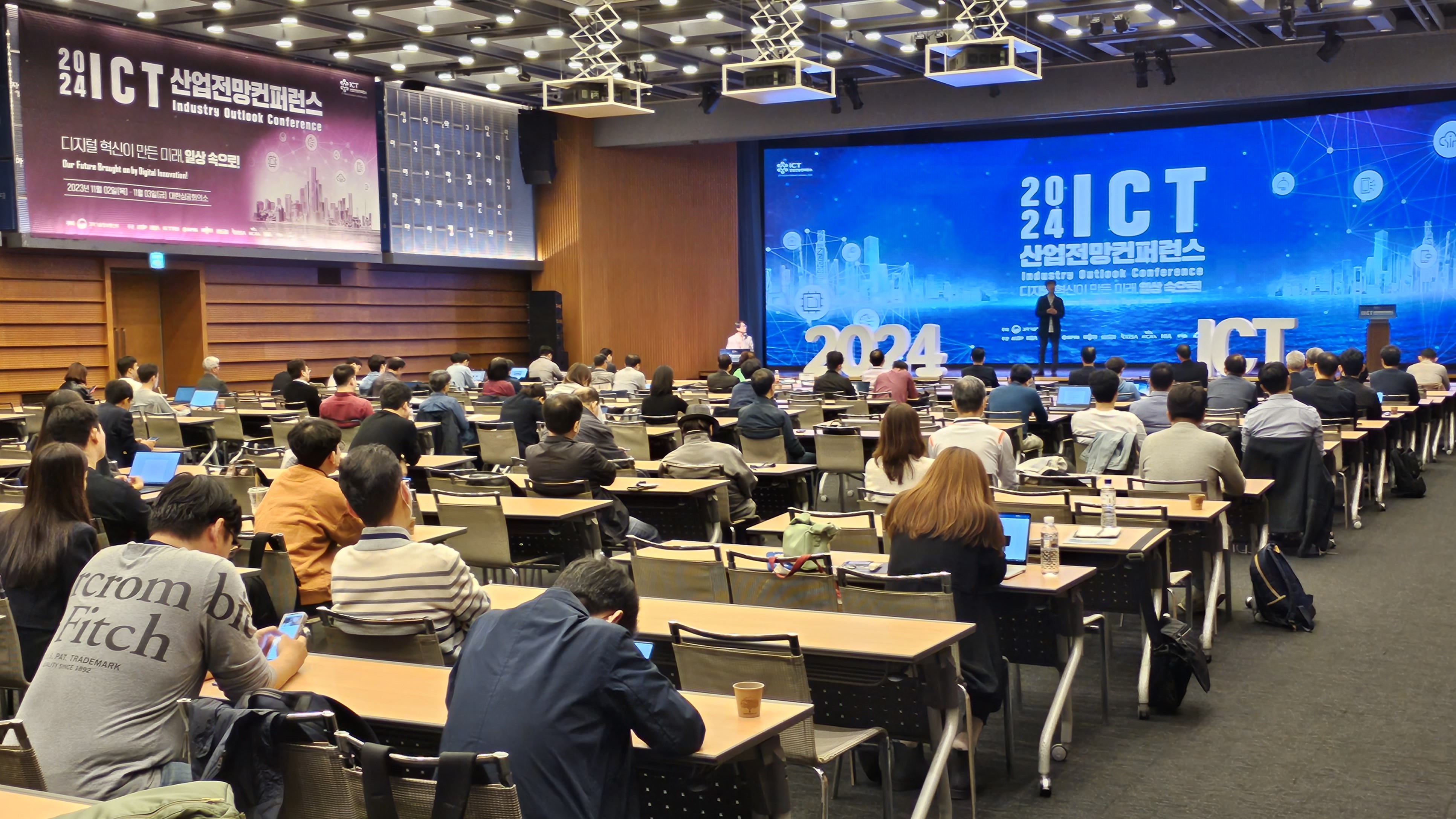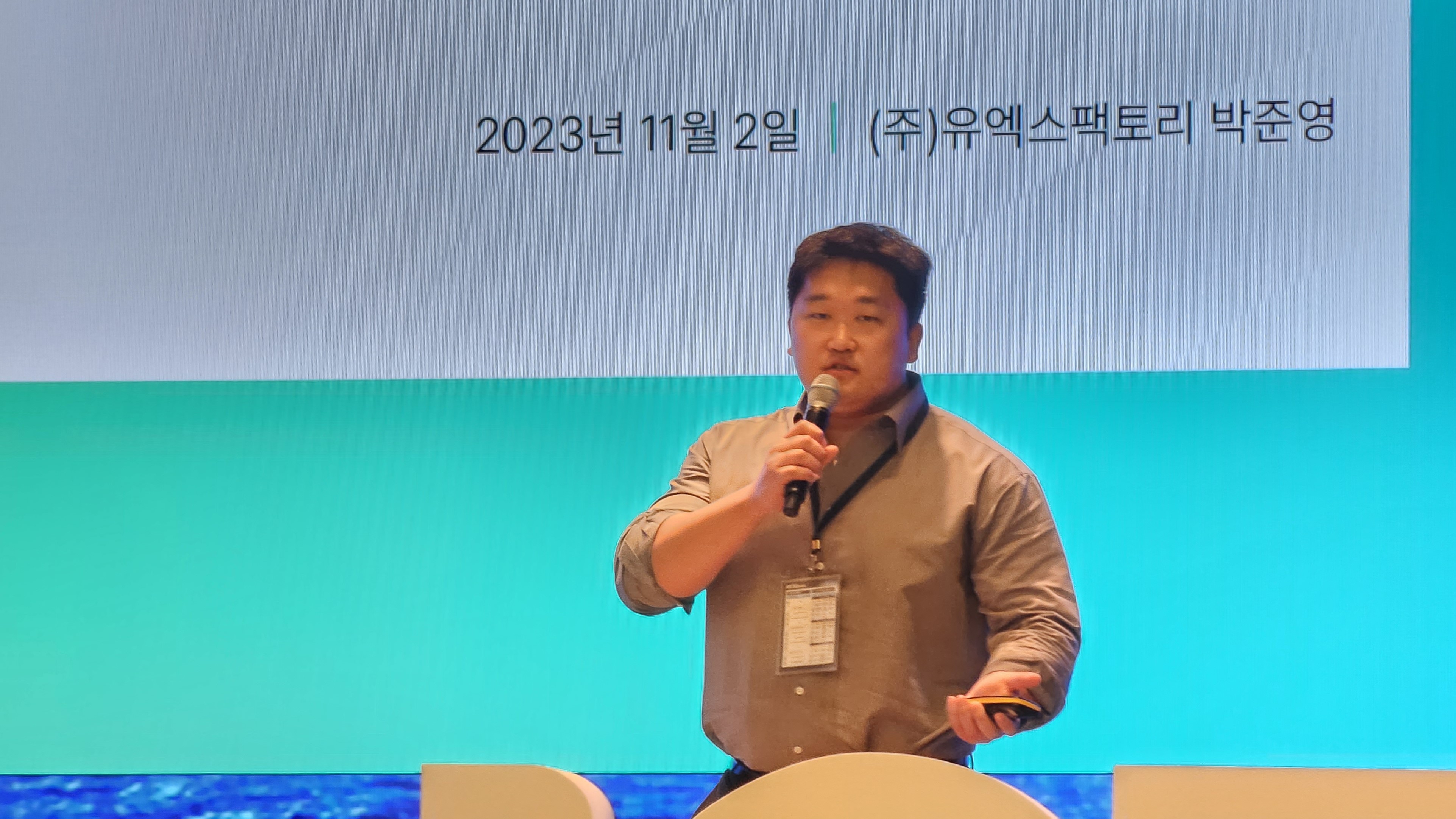국내 엣지 AI 반도체가 성공하기 위해선 애플리케이션에 특화된 성능이 필요하다는 주장이 제기됐다. 더불어 SW 풀스택과 관련 생태계 지원 등에 대한 이야기가 나오며 성장 방향성에 대한 인사이트가 공유됐다.

▲2024 ICT 산업전망컨퍼런스
“엣지 AI 반도체, 범용보단 특성화, SW 풀스택이 경쟁력”
AI 반도체 팹리스의 기회, 주변부 생태계 기반 지원 필요
국내 엣지 AI 반도체가 성공하기 위해선 애플리케이션에 특화된 성능이 필요하다는 주장이 제기됐다. 더불어 SW 풀스택과 관련 생태계 지원 등에 대한 이야기가 나오며 성장 방향성에 대한 인사이트가 공유됐다.
4일 진행된 2024 ICT 산업전망컨퍼런스에서 AI 반도체 개발 방향성으로 엣지 AI 반도체의 특성화와 소프트웨어 최적화에 대한 필요성이 제기됐다.
이날 AI 반도체 세션에서는 차철웅 한국전자기술연구원(KETI) 센터장이 좌장을 맡아 △김병수 SoC 플랫폼 KETI 연구센터장 △박준영 유엑스팩토리 대표가 나와 발표를 진행했다.
인공지능 발전의 두 축은 △클라우드/데이터센터향 초거대 AI △엣지컴퓨팅/엣지 AI로 크게 구분해볼 수 있다. 챗GPT의 등장으로 초거대 AI가 주목을 받고는 있지만 엣지 AI는 자율주행 및 모빌리티, CCTV 및 카메라, 로보틱스, 모바일, 무인이동체 등 우리 주변을 둘러싼 곳에 적용되는 첨단 제품들의 기반 요소 중 하나이다.
엣지 AI 환경에서는 제한된 리소스를 활용하기에 효율성이 매우 중요하며, 특히 특정 애플리케이션에 전문화된 솔루션으로 타케팅하는 것이 요구되고 있다.
■ 엣지 AI 반도체, “범용으론 안 돼”

▲김병수 SoC 플랫폼 KETI 연구센터장
김병수 센터장은 “엣지단에서는 △항공 △모바일 △공장 △선박 등 응용분야가 너무 많아 각 환경 별 하드웨어(HW) 및 소프트웨어(SW) 스펙이 상이한 문제를 갖고 있다”며 “범용적인 솔루션을 만들기 어렵다는 문제가 있다”고 설명했다.
실제로 중국의 대표적인 NPU 벤처기업으로 주목을 받은 캠브리콘은 범용적인 NPU 구조를 만들려고 노력했었다. 박준영 대표는 “캠브리콘이 인텔의 CPU처럼 범용적인 NPU를 만들려고 했다”며 “엣지용 클라우드 반도체를 개발해 어디서든 쓸 수 있는 AI 반도체 목표를 실현하려고 했으나 무지막지한 개발비에 결국은 작년 한 해 순손실만 2,000억원”이라고 덧붙였다.
박 대표는 중국의 NPU 개발 기업 호라이즌 로보틱스도 사례로 들었는데, 이 기업은 2015년 바이두 출신의 유카이가 설립해 범용성 있는 NPU 개발로 시작했다가 현재는 차량용 반도체 설계 전문기업으로 포지셔닝했다고 설명했다.
호라이즌 로보틱스는 상하이자동차와의 공동개발을 진행하면서 자율주행 SW 풀스택과 센서 개발을 지원하는 등 AI 반도체만 납품하는 것이 아닌 솔루션 전반에서 개발 협력을 함께하고 있다.
■ SW 솔루션 제공이 경쟁 핵심

▲박준영 유엑스팩토리 대표
박 대표는 “AI 반도체는 과거 전통적인 반도체 산업에서의 칩 납품에만 끝나는 산업이 아니다”라고 선을 그으며, “칩셋이 출시되면 딥러닝 프레임워크를 지원하며 모듈화와 솔루션 제공이 필연적으로 요구된다”고 강조했다.
실제로 AI 반도체 시장의 90% 이상을 차지하고 있는 AI 반도체의 황제로 군림한 엔비디아의 경우 미세공정과 SoC 설계에서 오는 HW 스펙의 우월함도 상당한 강점이 있지만, 엔비디아 전용 AI 프로그래밍 SW인 ‘쿠다(CUDA)’에서 화룡점정을 찍는다고 말하는 개발자들이 상당수이다.
박 대표는 “칩 내부의 TOPS가 높게 측정되는 성능과는 별개로 컴파일러(SW)를 잘 설계해 칩의 성능을 온전히 끌어낼 수 있는가가 관건”이라고 지적했다.
김 센터장은 “국내 엣지 AI 반도체를 개발하는 업체들이 SW도 함께 잘 개발하는 것이 필요하다”며 “타게팅하는 애플리케이션에 걸맞는 장점, 특성에 집중해 △레이턴시 △고성능 △저전력 등의 최적화 고민이 필요하다”고 조언했다.
또한 SW 측면 최적화 방안으로 △프루닝 △희소성 제거 △양자화 △전처리 △워크플로우 최적화 △병렬화 등에 대한 고려가 필요하다며, 이러한 방향으로 연구가 되어야 한다는 생각을 밝혔다.
■ 엣지 AI 팹리스 기회의 장, 주변부 생태계 지원 必
서버향 AI 반도체에선 엔비디아의 H100, A100 등이, 엣지향 AI 반도체에선 엔비디아 젯슨 나노 플랫폼이 첫째 가는 솔루션으로 1위를 차지하고 있는 가운데 국내 AI 반도체 팹리스들이 시장 변화에 따른 기회의 장이 열리고 있다.
특히 엣지 디바이스에선 범용 솔루션이 일일이 대응할 수 없는 다양한 애플리케이션별 특성에 대응하기 위해 개별화된 AI 반도체 필요성이 높아지고 있는 것이다.
다만 SoC 패러다임이 대세가 되면서 팹리스 스타트업들의 경쟁 대상은 퀄컴과 같은 글로벌 초거대기업과 맞붙어야 되는 상황이다.
박 대표는 “SoC에서는 칩 내부 통신을 잘 써야 하고 IP를 어떻게 탑재할지 협의하면서 해야 하는데 이런 부분이 팹리스 스타트업은 쉽지 않다”며 “정부 정책 고려에서도 생태계 관점에서 접근해 단순히 최고 성능의 AI 반도체를 만드는 것이 목표가 아니라 AI 반도체를 잘 만들 수 있도록 이를 둘러싼 기술과 생태계 지원에도 힘써야 한다”고 지적했다.


